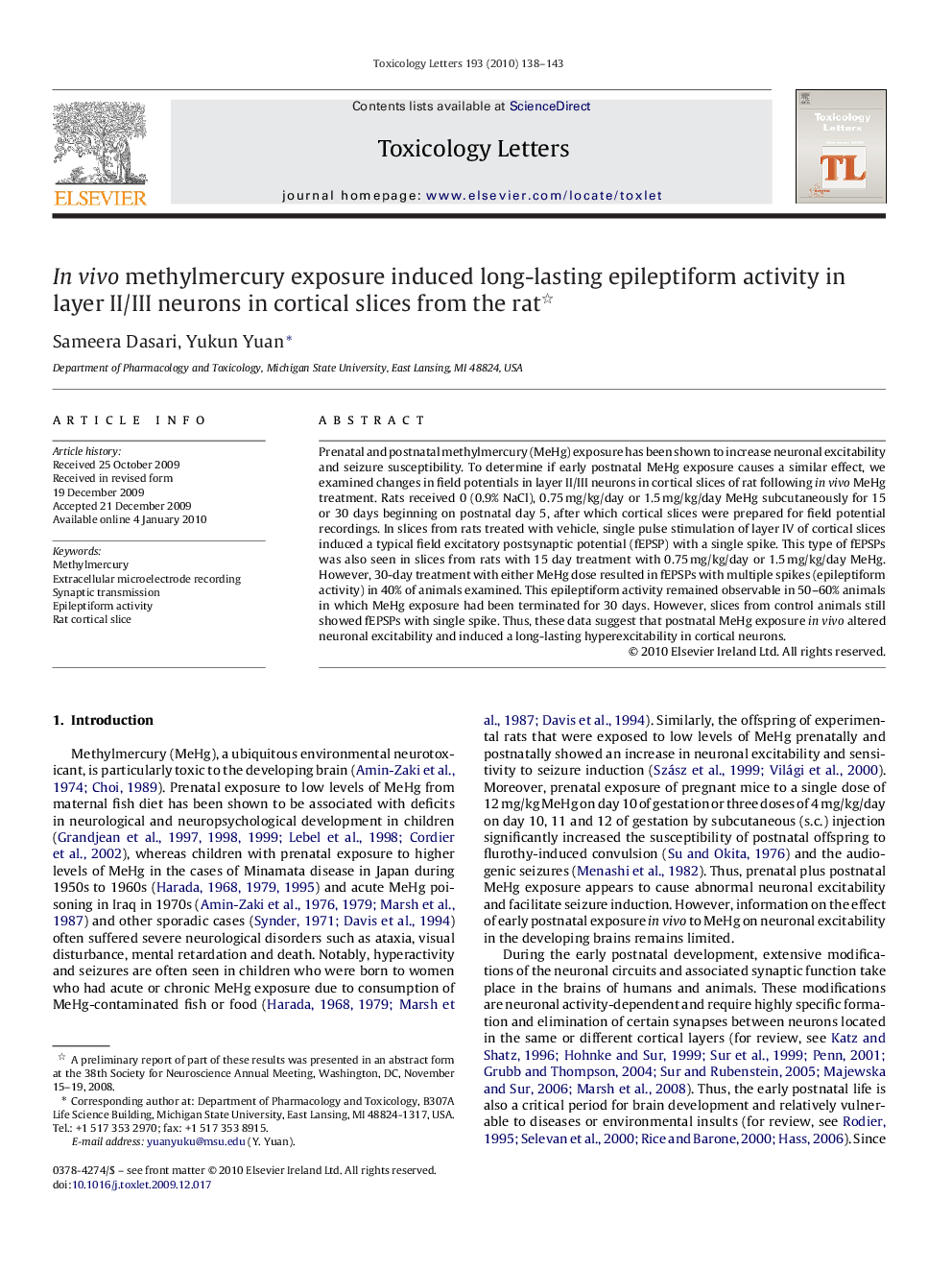| Article ID | Journal | Published Year | Pages | File Type |
|---|---|---|---|---|
| 2600496 | Toxicology Letters | 2010 | 6 Pages |
Prenatal and postnatal methylmercury (MeHg) exposure has been shown to increase neuronal excitability and seizure susceptibility. To determine if early postnatal MeHg exposure causes a similar effect, we examined changes in field potentials in layer II/III neurons in cortical slices of rat following in vivo MeHg treatment. Rats received 0 (0.9% NaCl), 0.75 mg/kg/day or 1.5 mg/kg/day MeHg subcutaneously for 15 or 30 days beginning on postnatal day 5, after which cortical slices were prepared for field potential recordings. In slices from rats treated with vehicle, single pulse stimulation of layer IV of cortical slices induced a typical field excitatory postsynaptic potential (fEPSP) with a single spike. This type of fEPSPs was also seen in slices from rats with 15 day treatment with 0.75 mg/kg/day or 1.5 mg/kg/day MeHg. However, 30-day treatment with either MeHg dose resulted in fEPSPs with multiple spikes (epileptiform activity) in 40% of animals examined. This epileptiform activity remained observable in 50–60% animals in which MeHg exposure had been terminated for 30 days. However, slices from control animals still showed fEPSPs with single spike. Thus, these data suggest that postnatal MeHg exposure in vivo altered neuronal excitability and induced a long-lasting hyperexcitability in cortical neurons.
